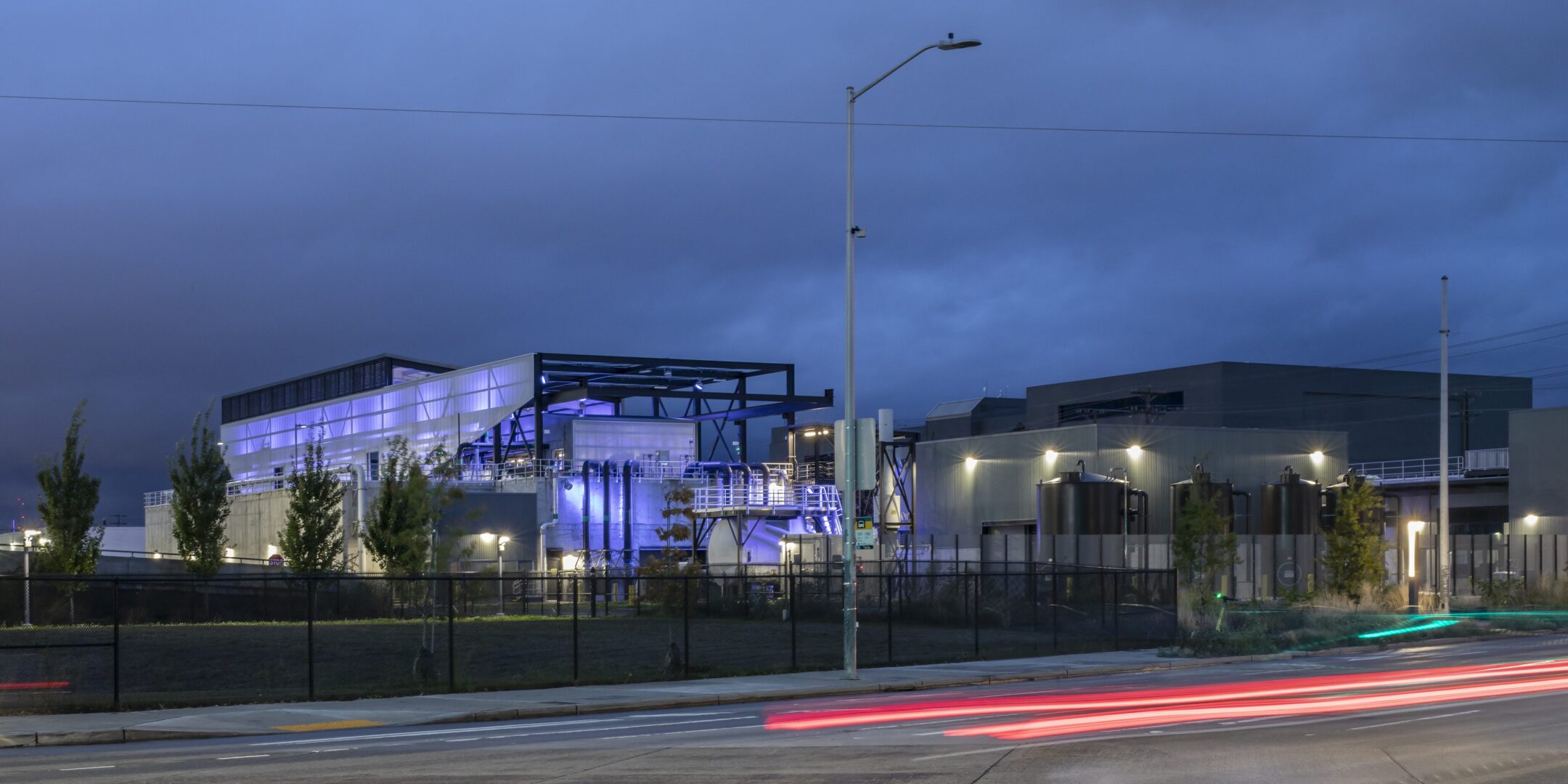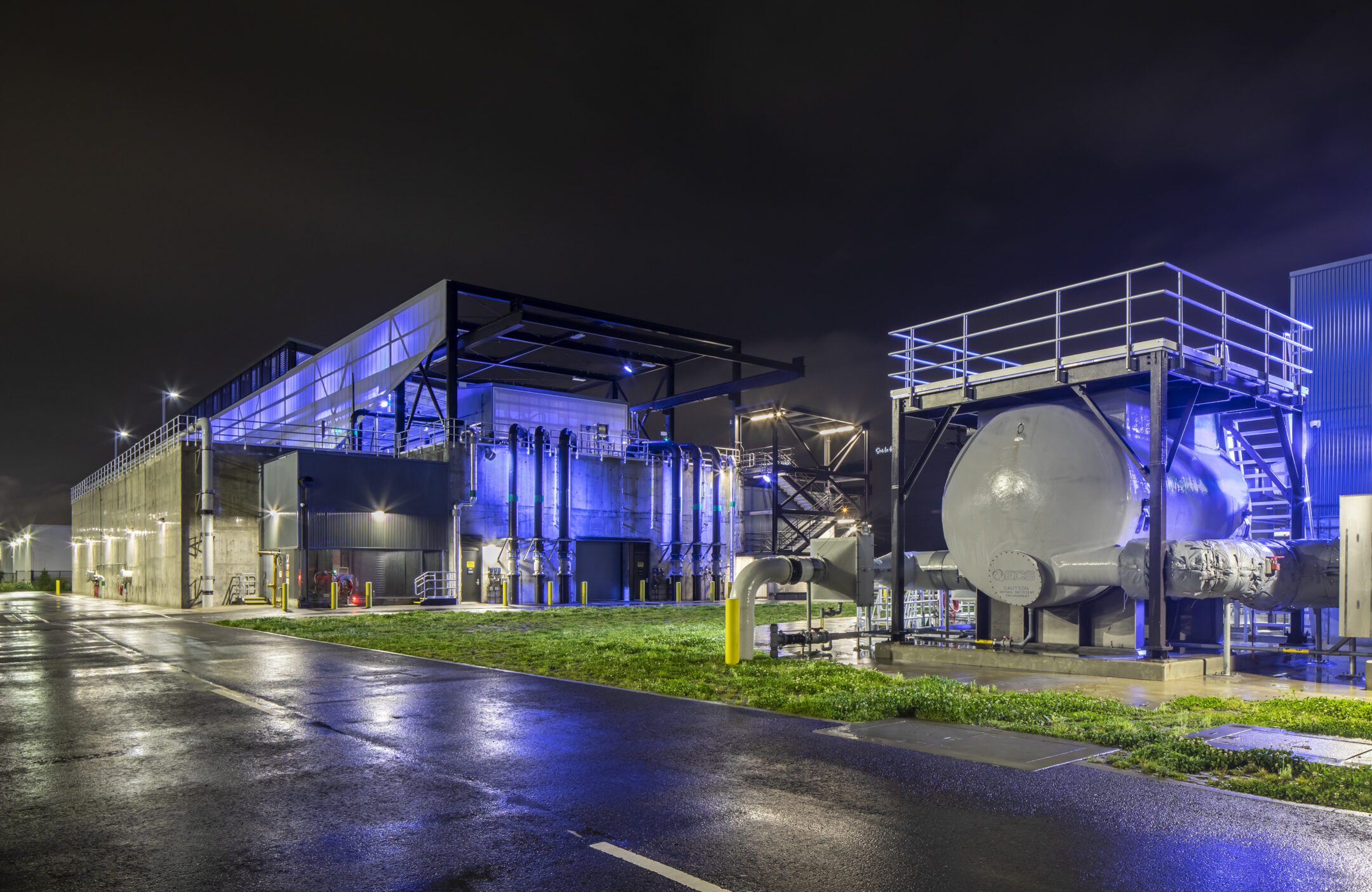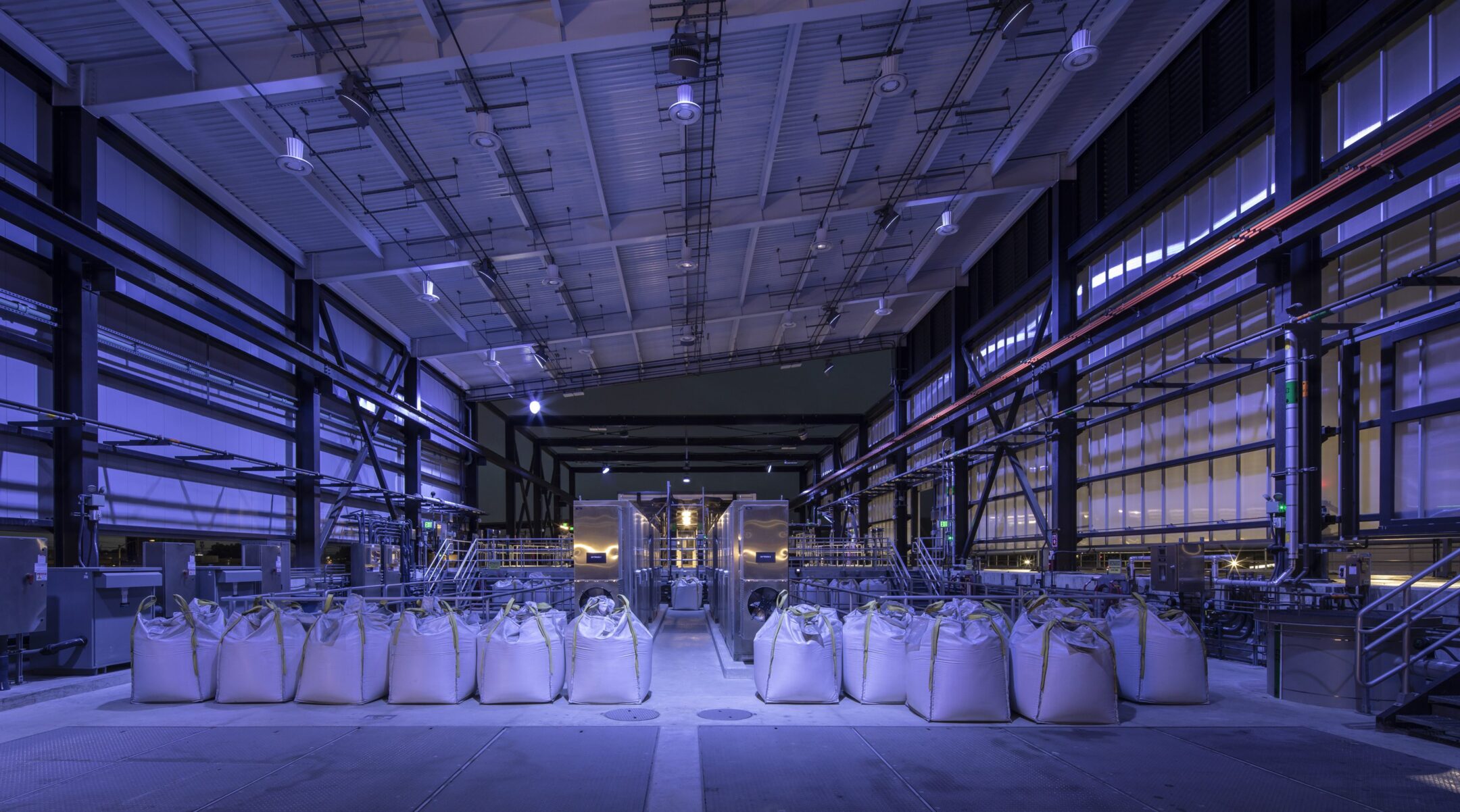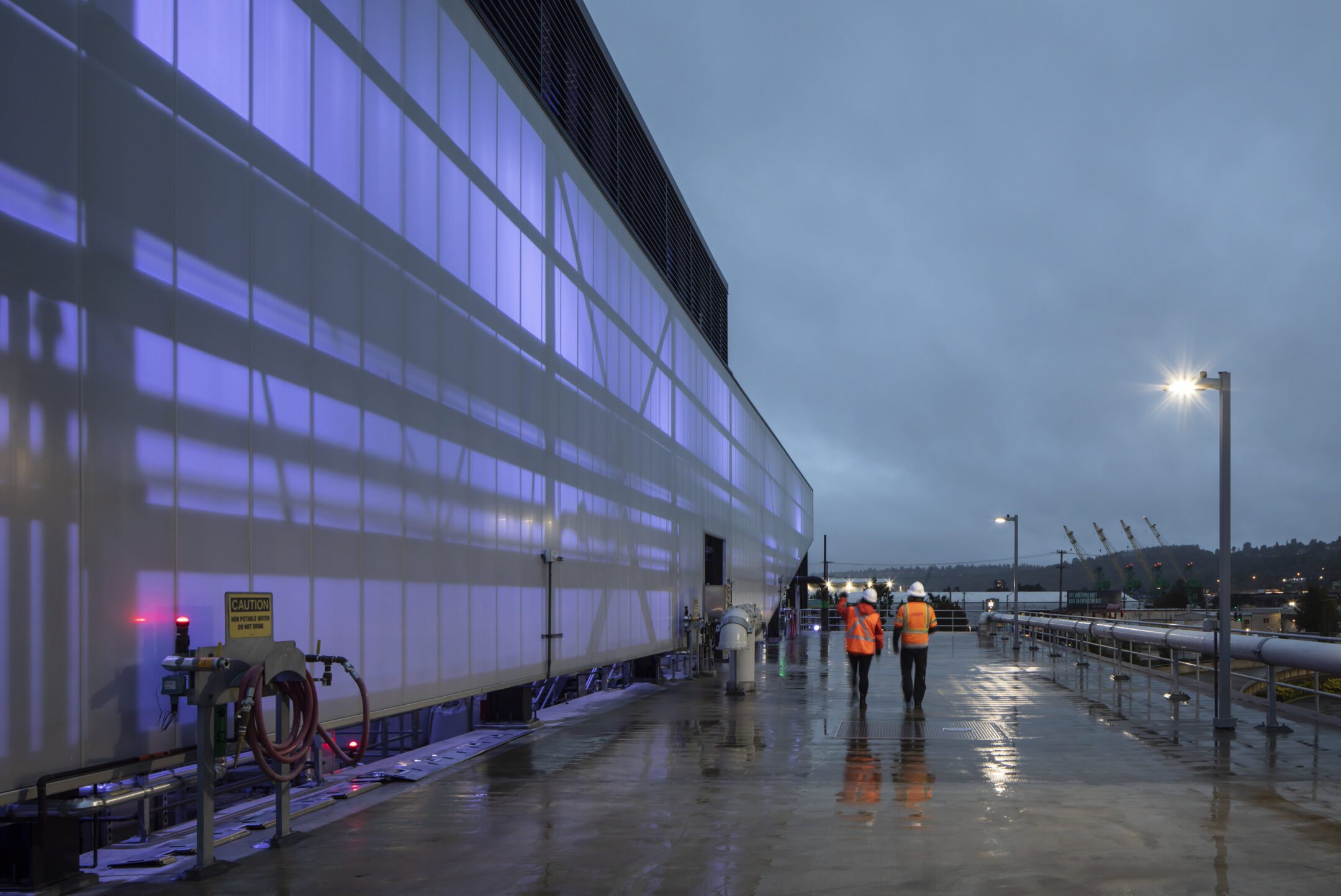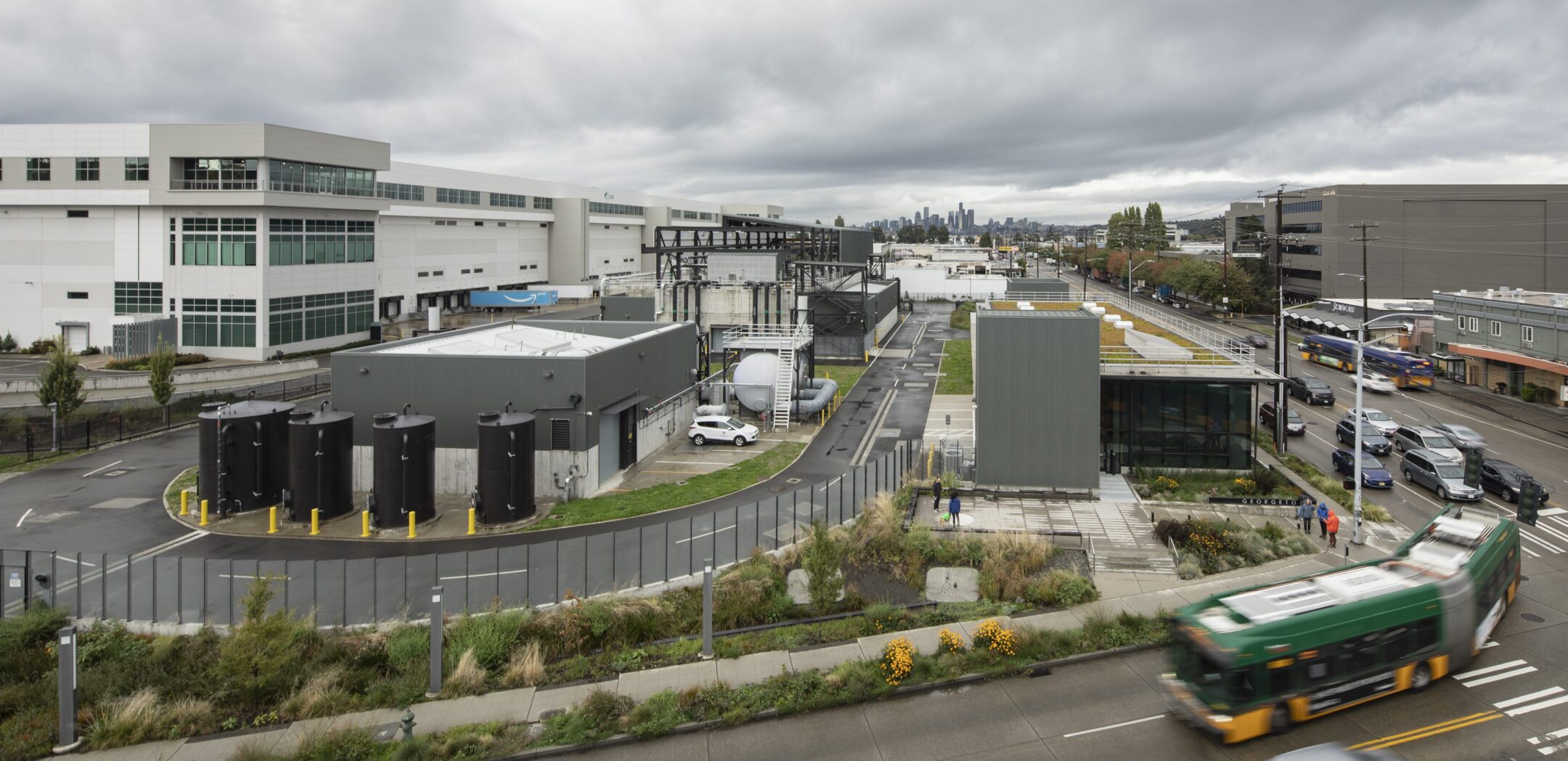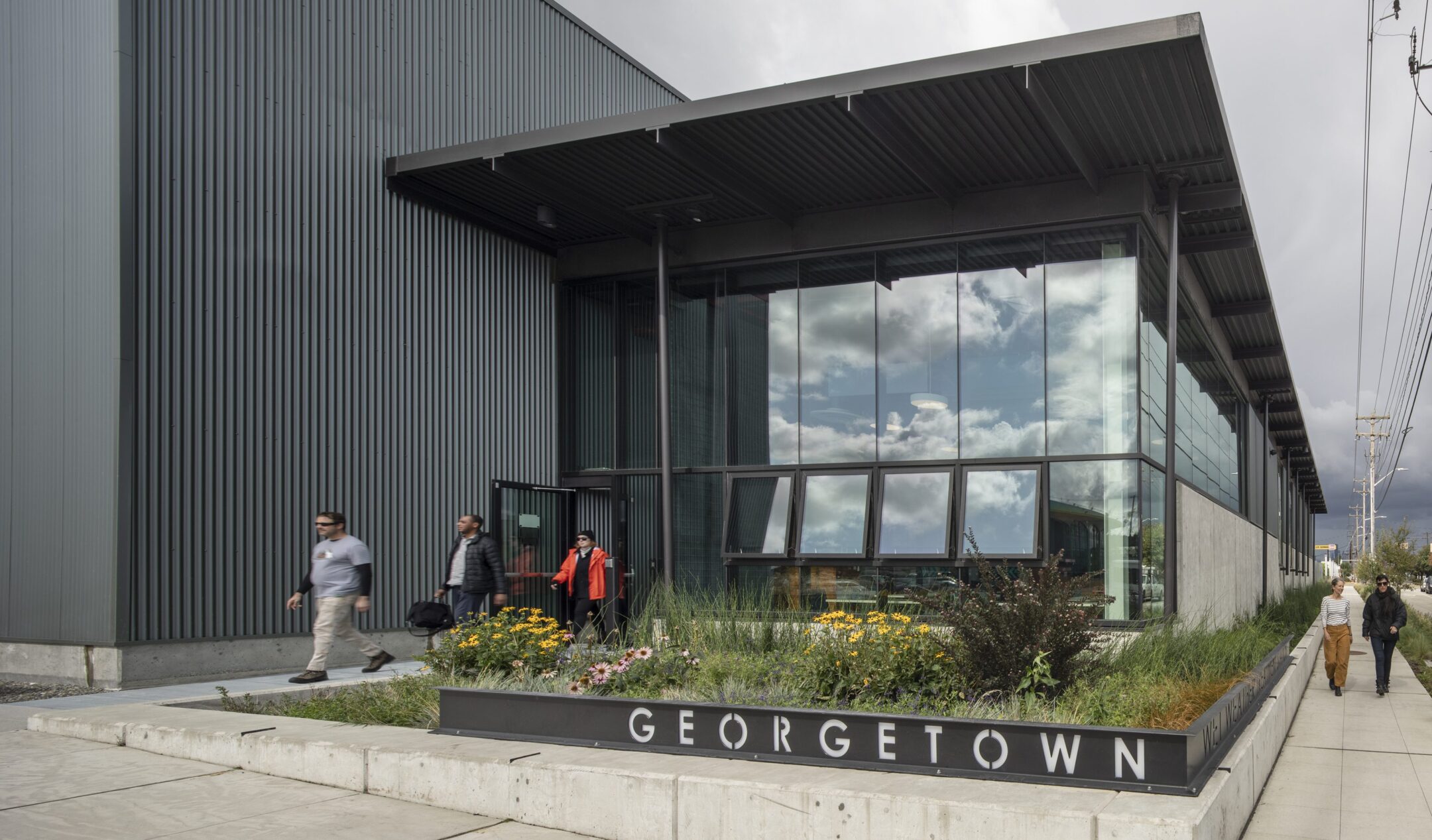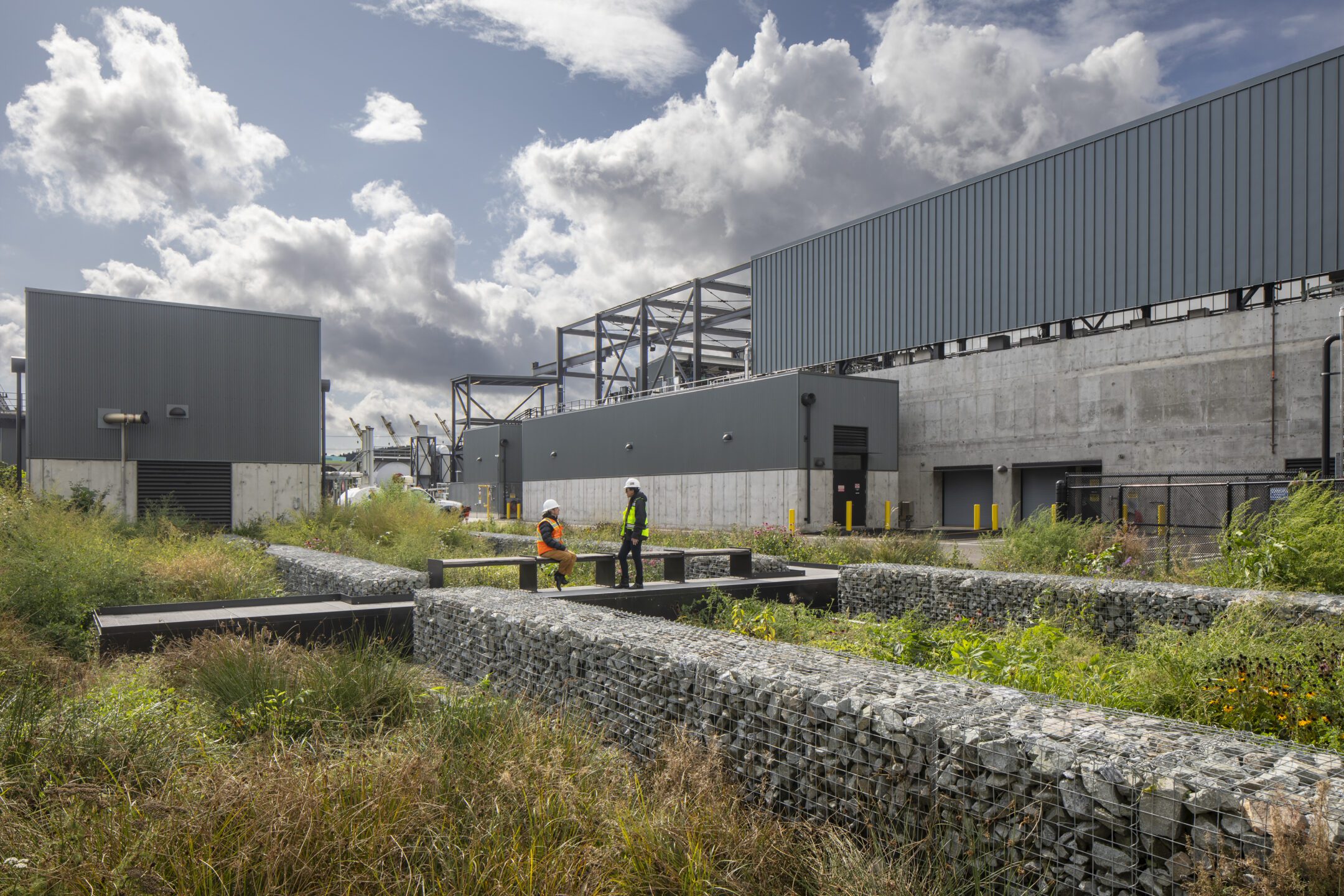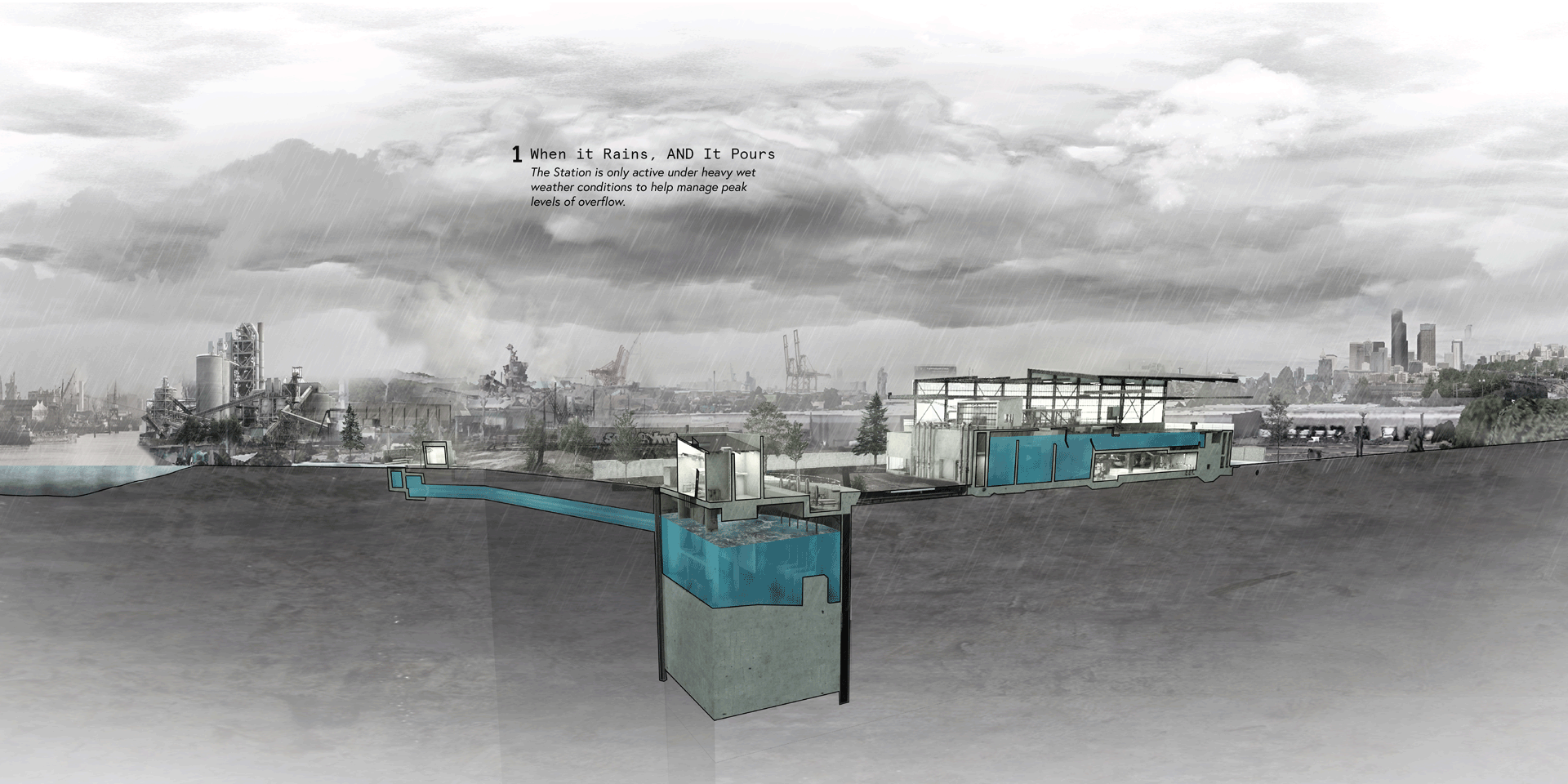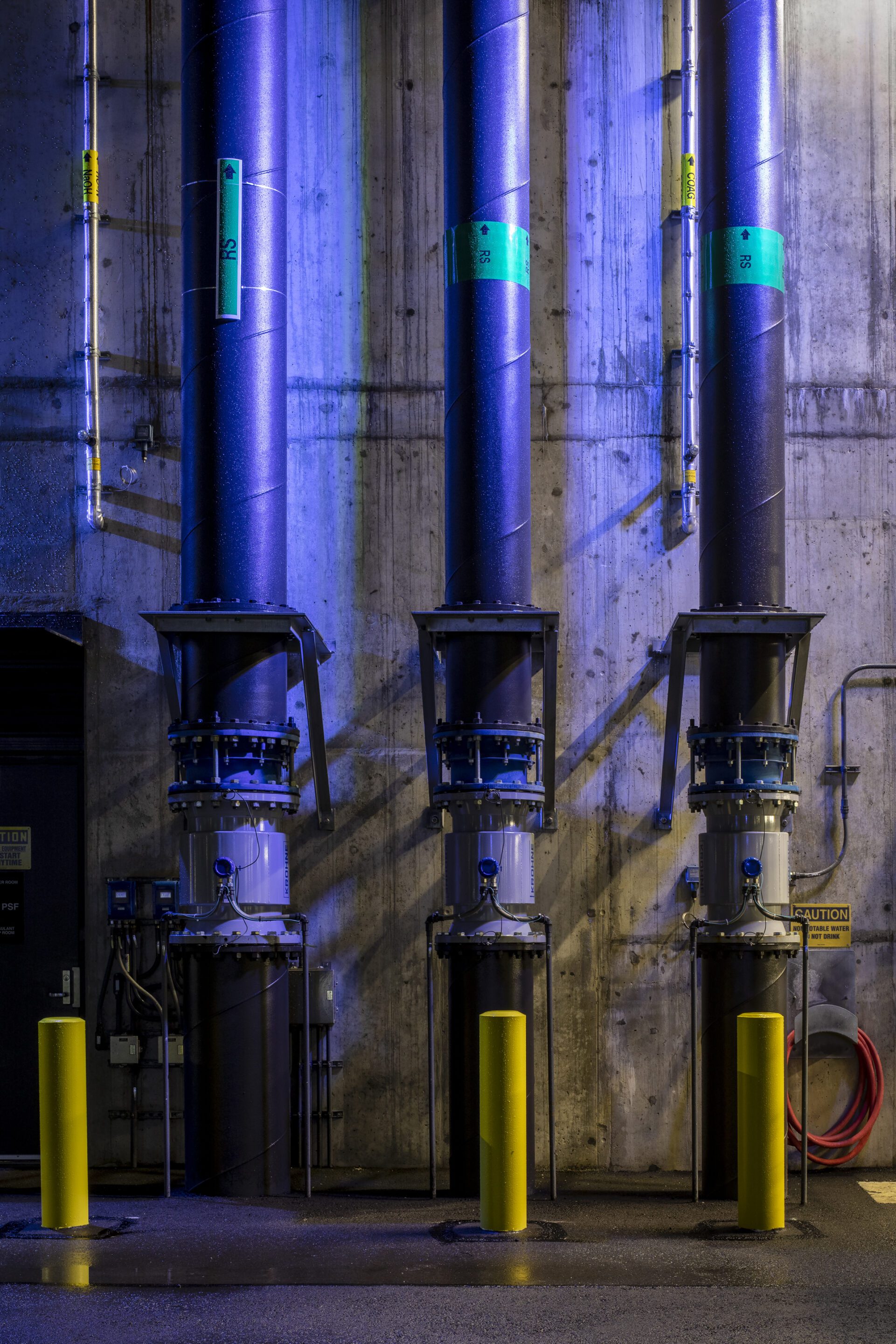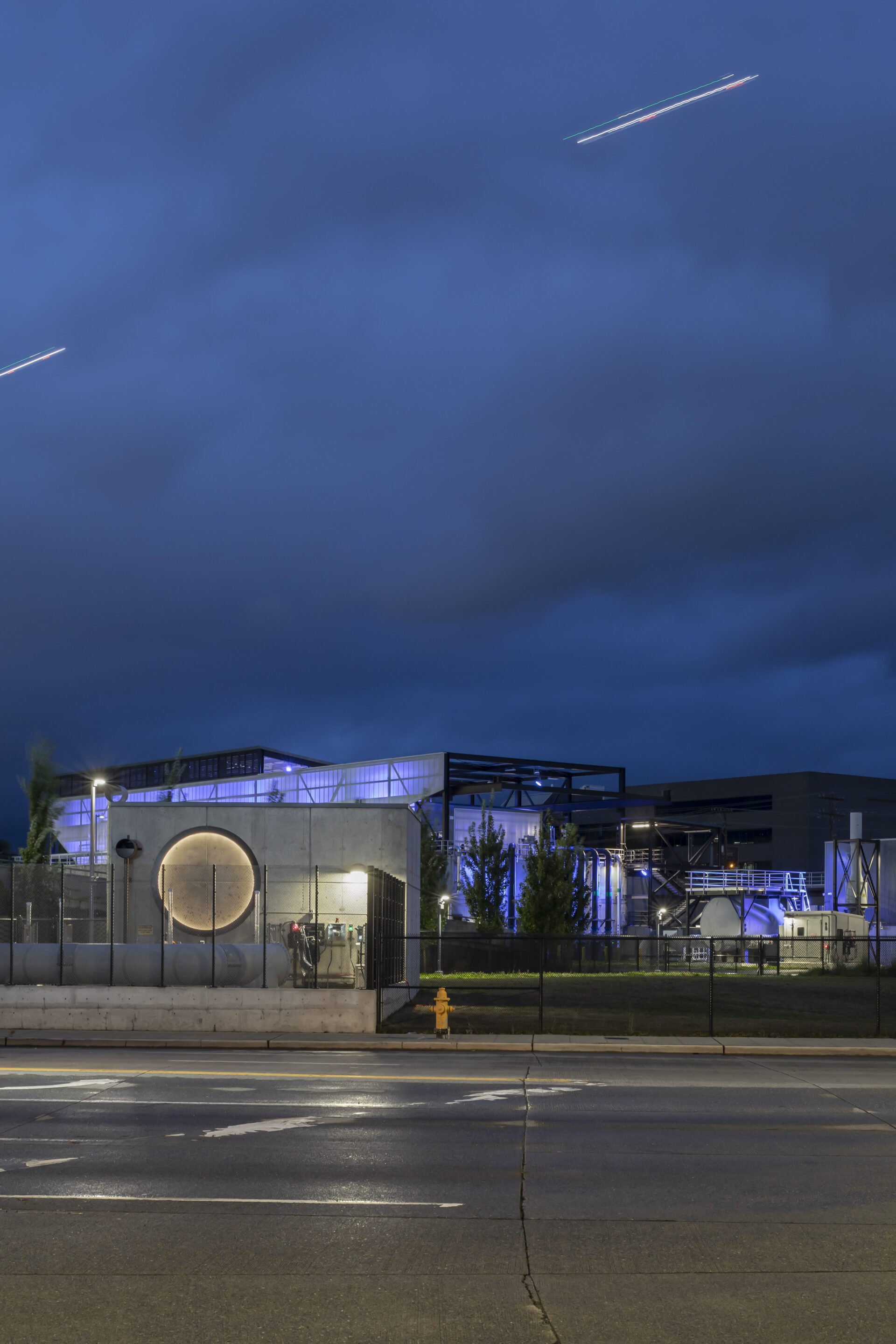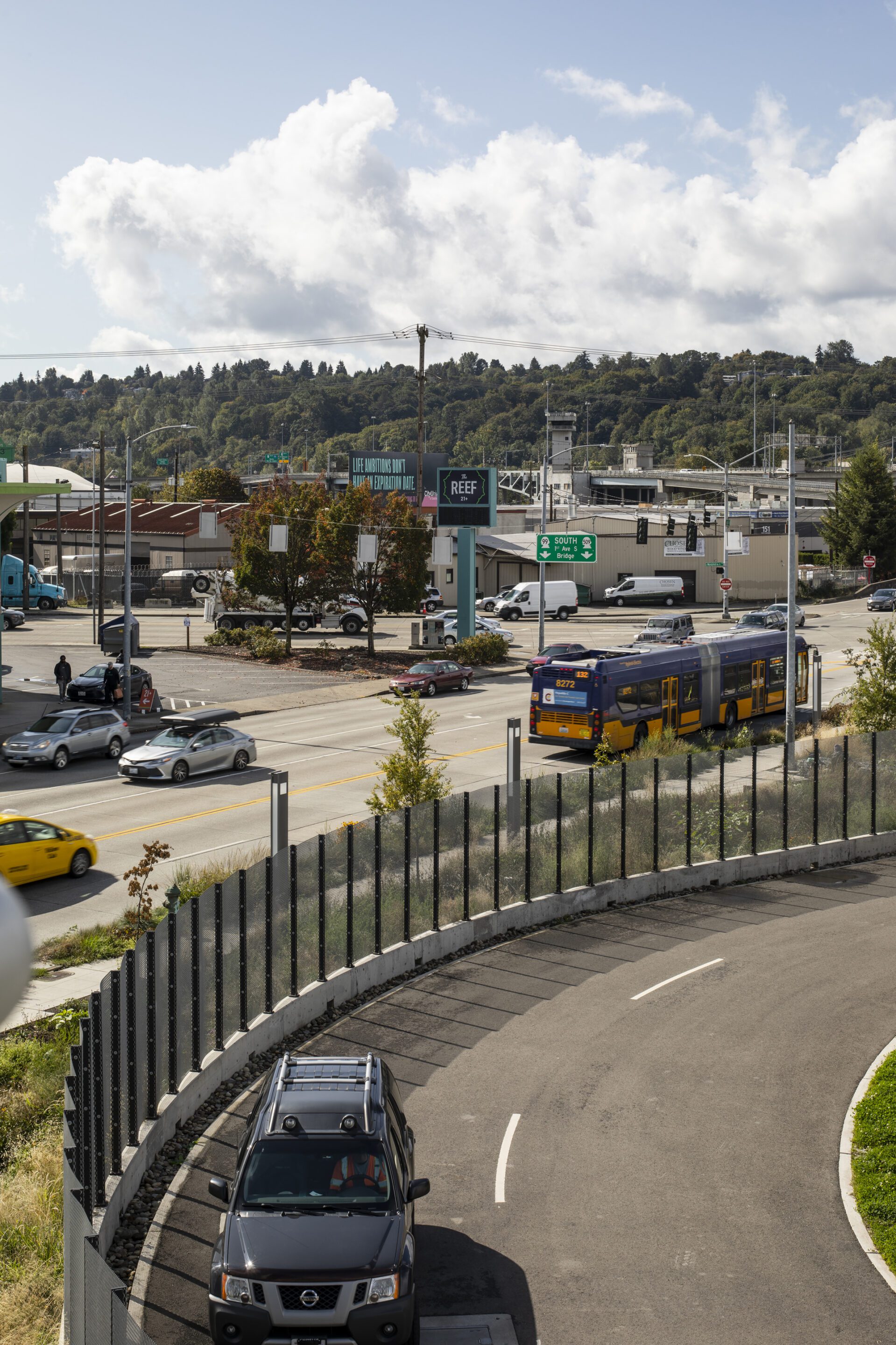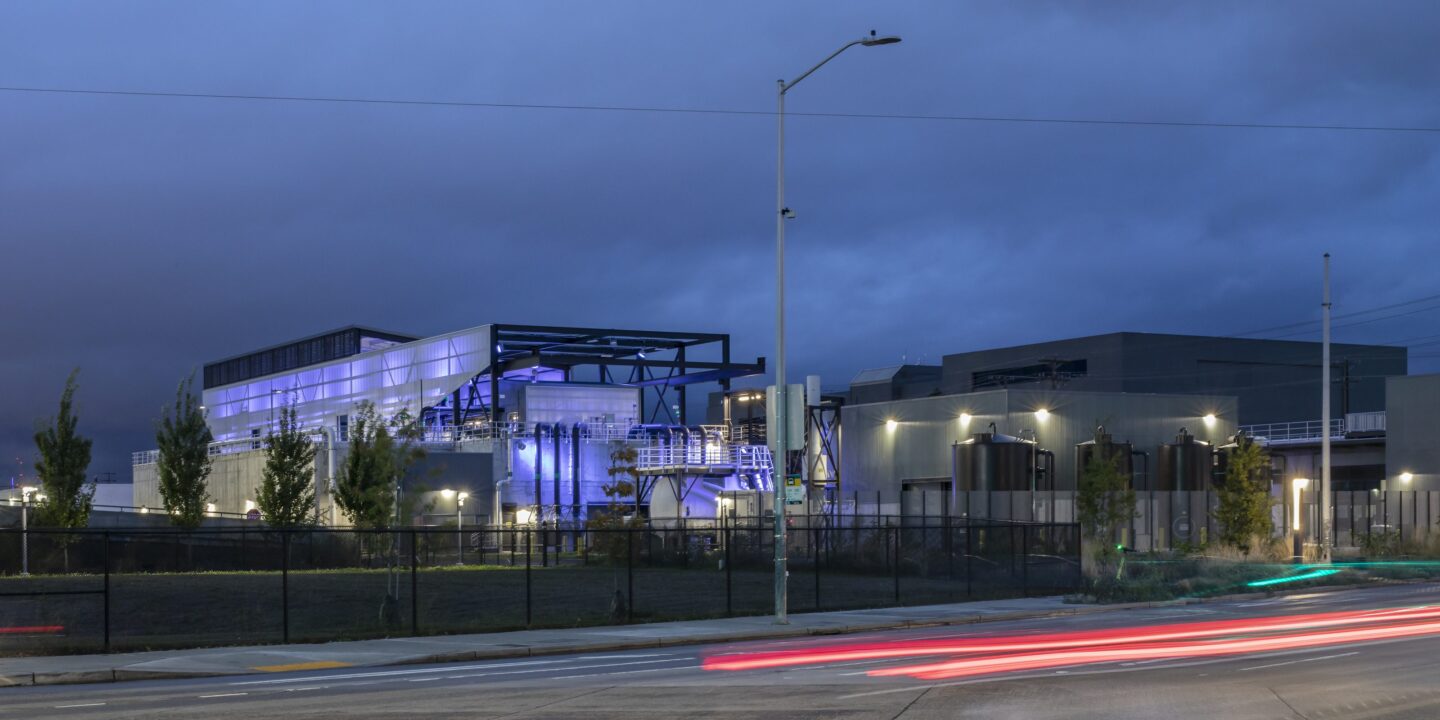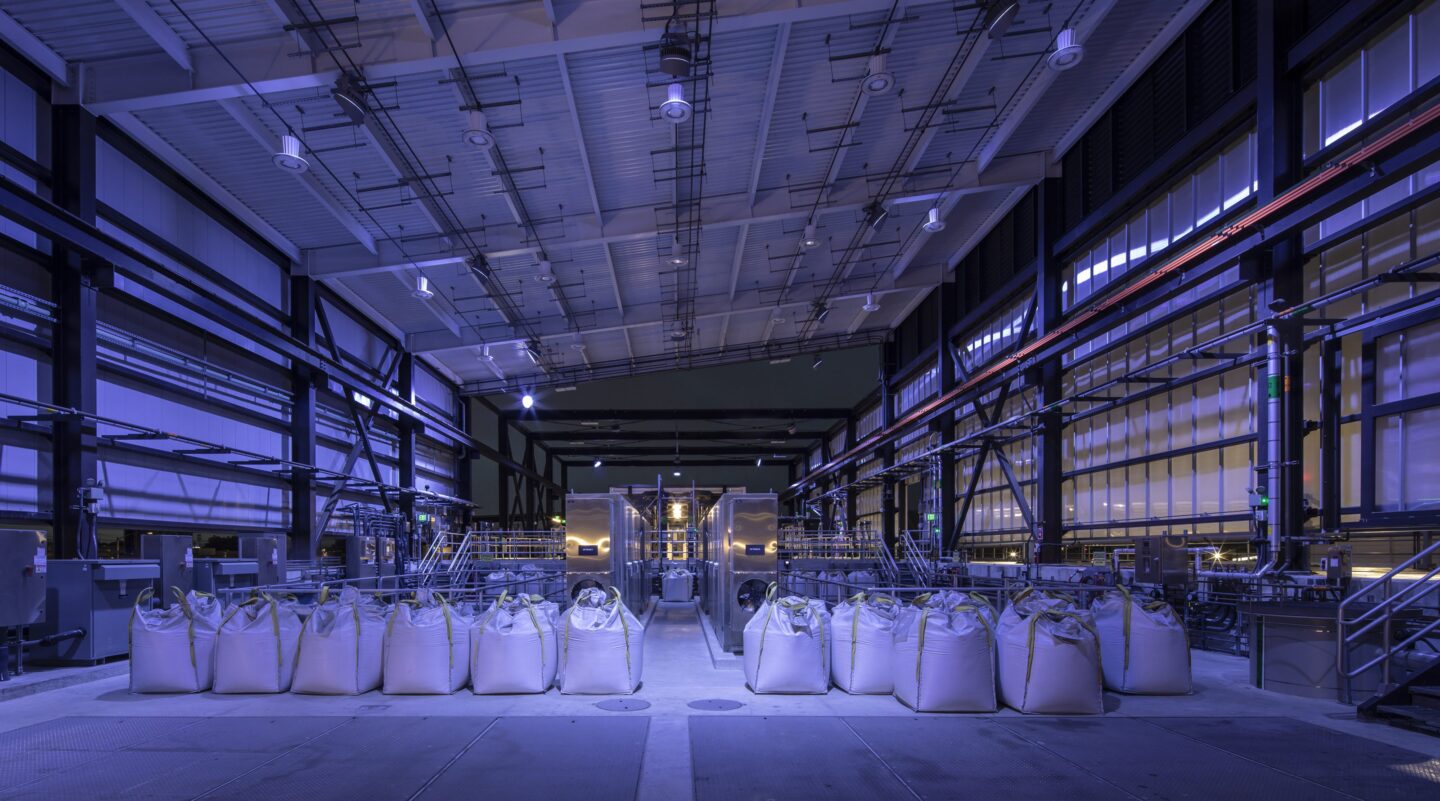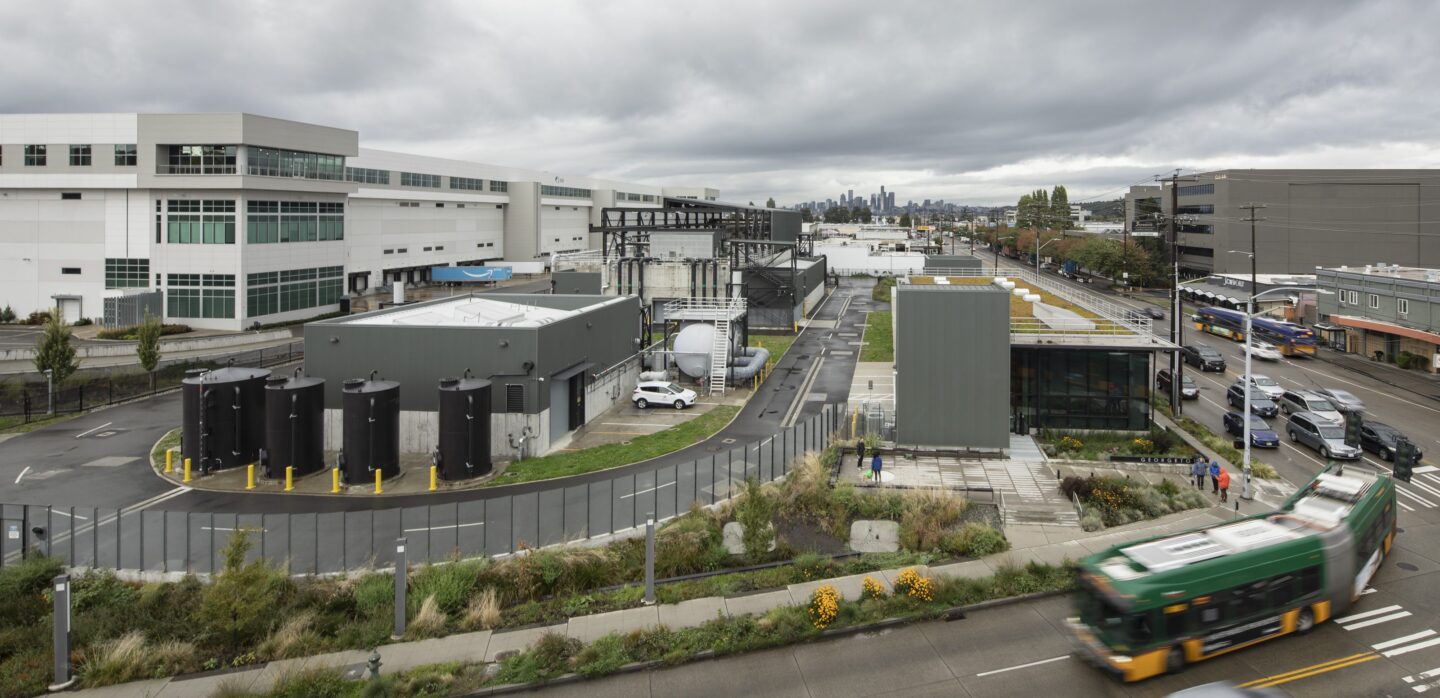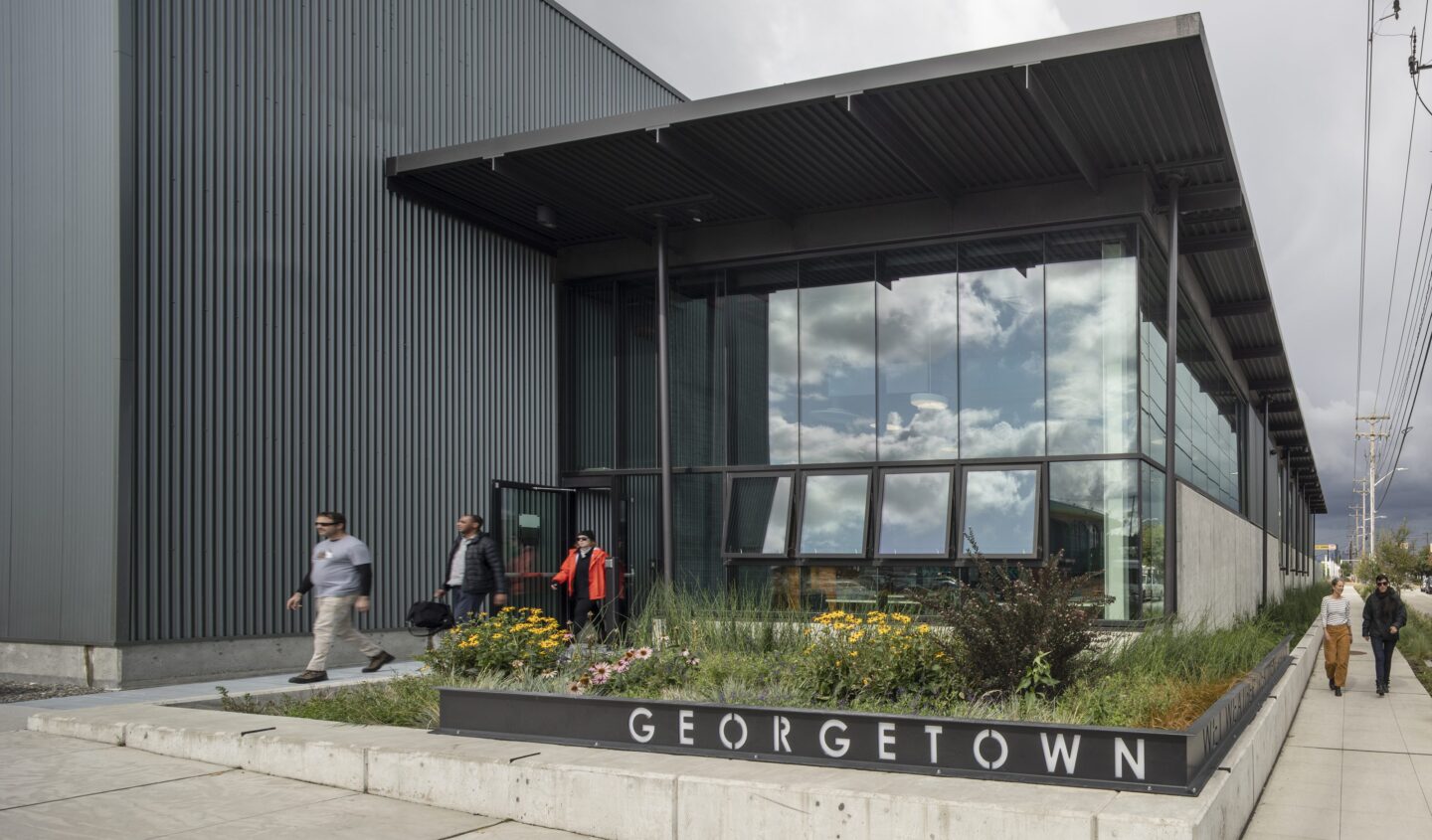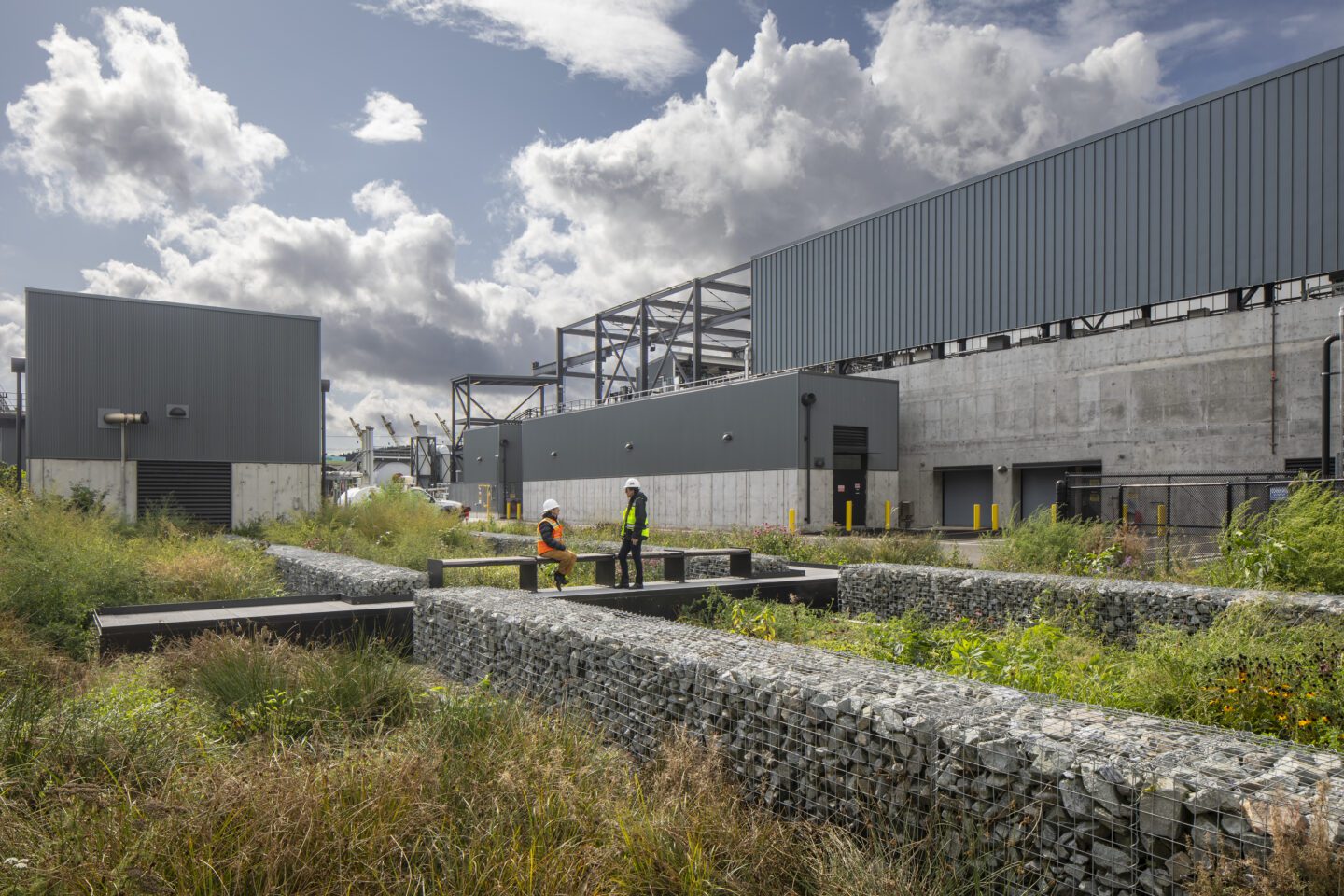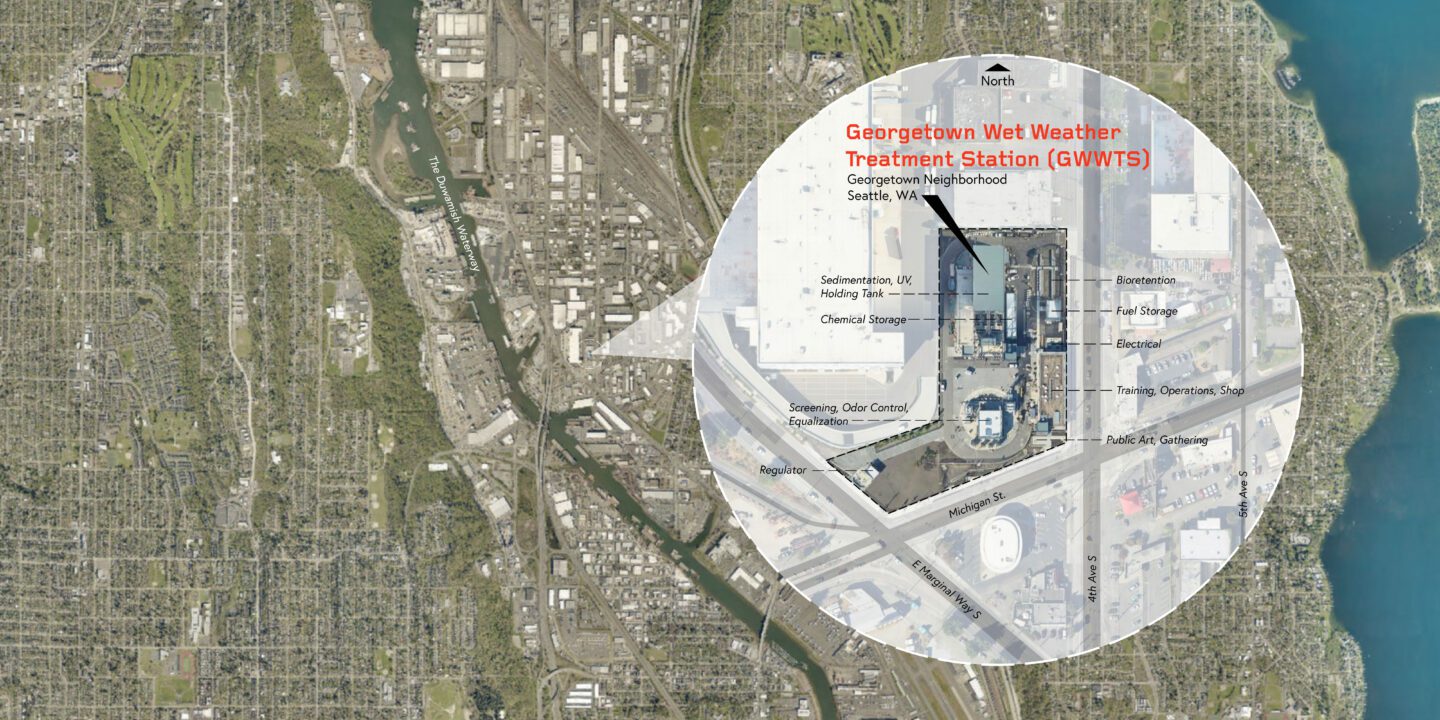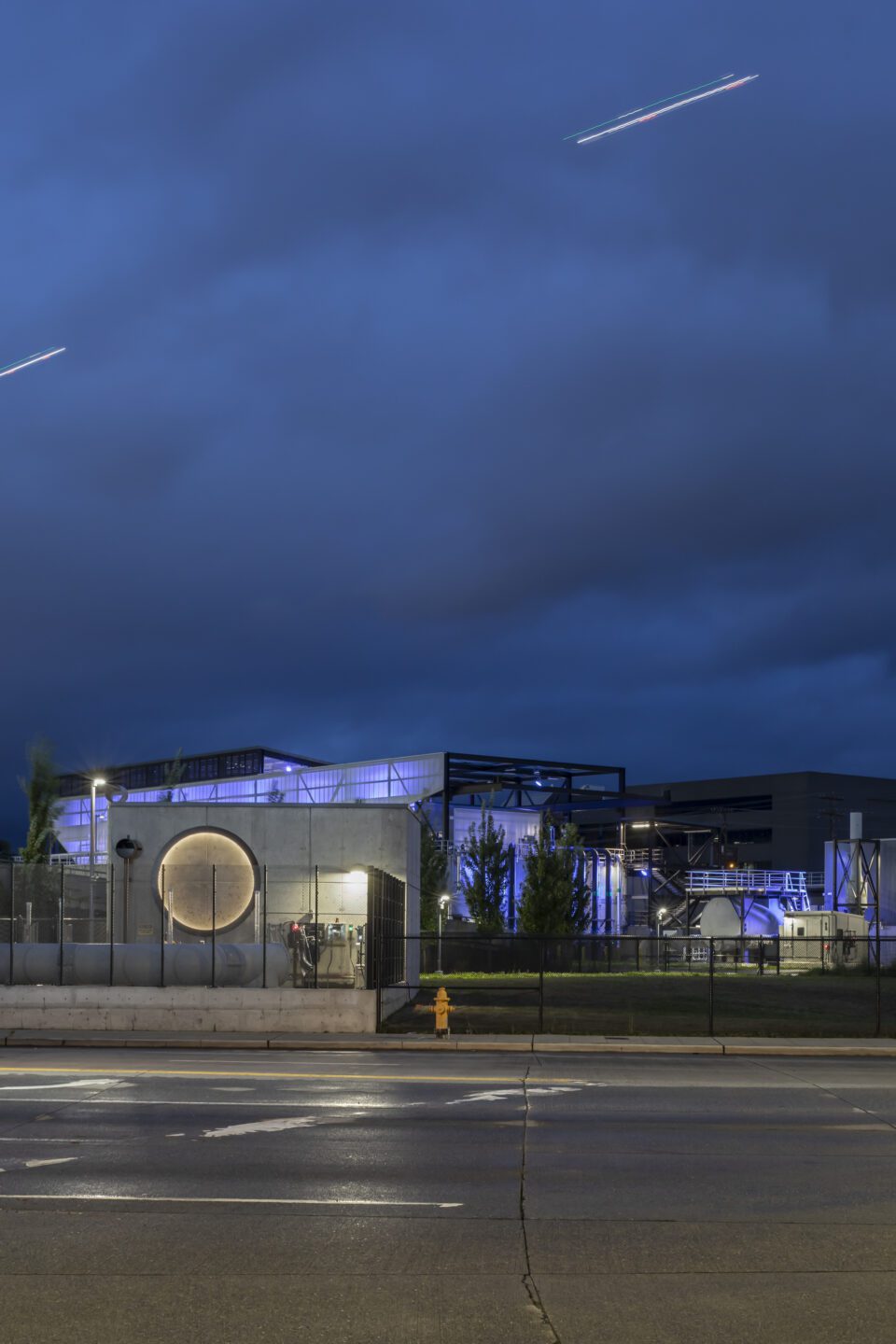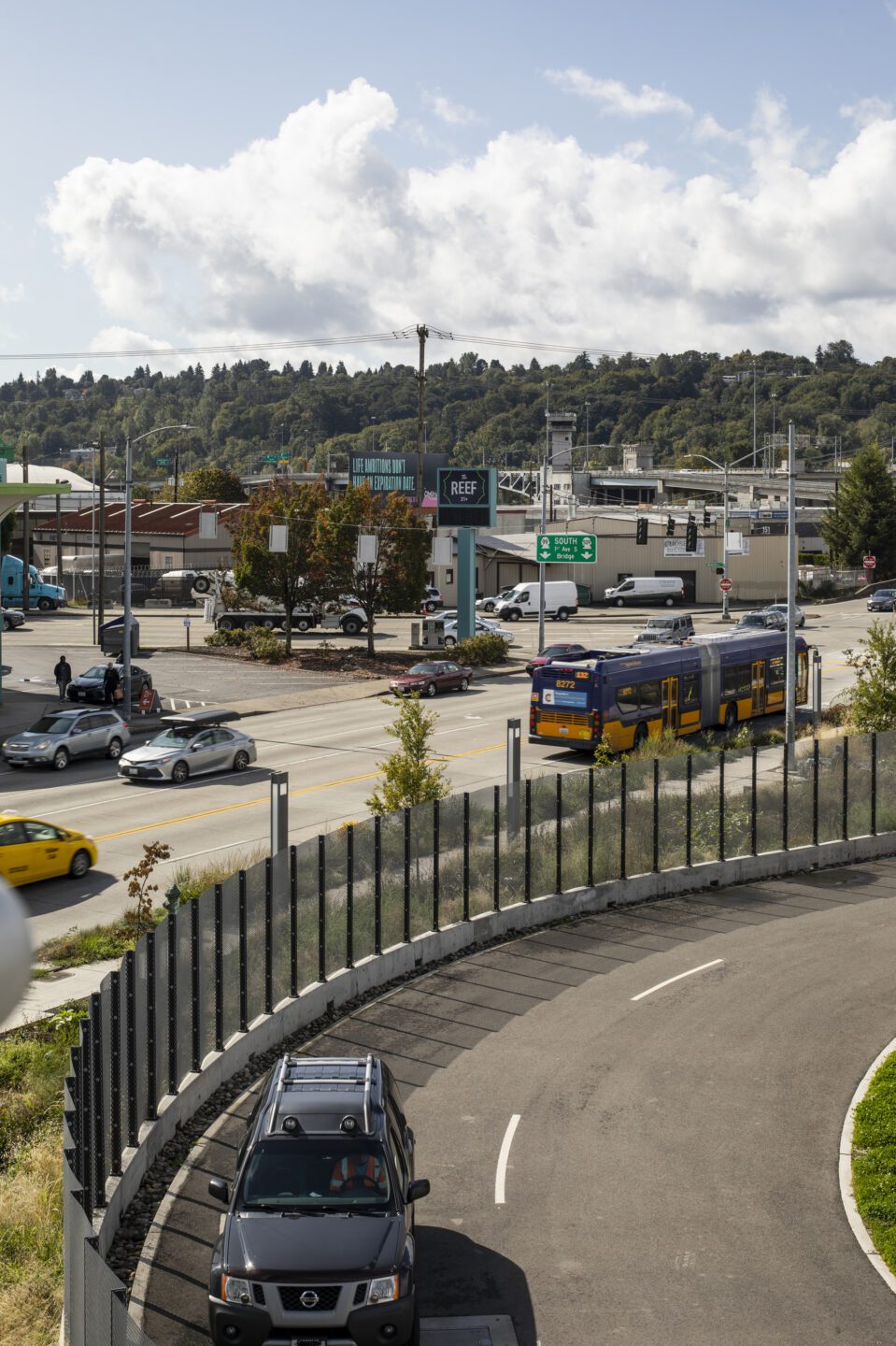Georgetown Wet Weather Treatment Station
Seattle, WA
VIEW MAP
Theater of a Storm
People: When winter storms hit in Seattle, a mix of runoff and sewer overflow is discharged into the Duwamish River to prevent flooding. This project is the first in a series of eight capstone projects King County is undertaking to protect the River on behalf of the ratepayers, recreating the natural function of the mudflats that historically occupied the bank of the Duwamish River. The Station has become the first Platinum-awarded Envision project in Washington state, underscoring its lasting positive social, economic and environmental benefits.
Architecture: The Georgetown Wet Weather Treatment Station departs from the idea that industrial facilities should be opaque and hidden, kept away from view or put underground. In several moves, The Station comes closer; providing access to the community visually through scale and siting, as well as through tours and educational initiatives.
Research: The Station incorporates the Theater of a Storm, a responsive light installation that, by tracking the flow of water through the plant, makes legible the hard work the Station is doing during the darkest, stormiest nights in Seattle. Drivers and passersby will be able to see the pieces of the massive ecological machine light up and understand that, as they head home, the Station is working hard throughout the night.
Art Integration: The Theater of a Storm
Viewed from outside the Station, the Theater of a Storm is a sequence of lighting events that indicates and tracks the stormwater treatment sequence. It starts with an 8-foot ring light that, like an on-button, represents the opening of the valve that allows the overflow of the stormwater to come into the plant. Then, the lighting sequence follows each actor as they enter the stage; the equalization basin, odor control, the UV scrubbers, and so on. When the event is over, the lights turn off one by one, in sequence.
Art Integration: The Monument to Rain
Designed by Artist Sans Façon, supported by funding from 4Culture and fabricated in partnership with El Dorado, the Monument to Rain is a large, dynamic public artwork consisting of a five-foot diameter, forty-five-foot tall, one-and-a-half-inch thick polymer tube that is fastened to a concrete foundation but otherwise stands vertically unsupported. When it’s raining in Seattle, it will not rain inside the polymer tube; and when it’s not raining in Seattle, it will rain inside the tube. The “Monument to Rain” will stand to celebrate the unique weather conditions of the Pacific Northwest and ensure that it is indeed always raining in Seattle.
Architecture, part 2
The treatment facility is the centerpiece of The Station; it is the most visibly active building, where several steps of water treatment happen. Since activity on this level will happen primarily in winter months, a metal roof and translucent windbreaker wall protect workers from prevailing gusts while maintaining a daylit workspace.
The design team also took the active buildings scaled exclusively for humans –workshops, offices, control rooms– and placed them right at the edge of the site inplace of a perimeter fence. This configuration lets passersby see that people are here, and activity is happening. Further inside the site, the things that are the noisiest, tallest and potentially emit odor are the furthest away from where people would be.
Sustainability
During demolition and construction, the team minimized waste by more than 85% by reusing and recycling. Wood from the existing buildings was reused in the new interiors, and 100% of the existing concrete was recycled. All rainwater onsite is slowed, cleansed and celebrated through Green Stormwater Infrastructure (GSI) strategies such as a large vegetated roof, permeable pavements, extensive bioretention planters, and rainwater-capturing cisterns. Cisterns ranging from 35,000 to 50,500 gallons provide 50% of the site’s irrigation, as well as stormwater detention. To increase renewable energy generation and consumption, a 2.3kW PV system is installed on the O&M building, and the rest of the treatment facilities are solar-ready with the capability to support a future 100kW system.
We love talking about our projects. If you’d like to chat, reach us at info@signalarch.com.
Team
- Owner: King County Wastewater Treatment Division
- Design Collaborator / Architect of Record: Miller Hull Partnership
- Design Architect: Signal Architecture + Research
- General Contractor: Flatiron West
- Wastewater and Systems Engineer: Jacobs
- Wastewater and Systems Engineer: HDR
- Landscape Architect: Berger Partnership
- Structural Engineer: Bright Engineering
- Lighting Design: Blanca Lighting
- Artist: Sans Facon
- Public Art: 4Culture
- Community Engagement : EnviroIssues
- Photography: Lara Swimmer
Year of Completion: 2023
Gallons per day: 70M
Integrated Artworks: 2
Population Served: 175,000
Michael Popiwny, Senior Capital Project Manager, King County Wastewater Treatment DivisionSignal was a team player on this project…and they pushed the design of major industrial facility to higher levels, from inception to completion.
